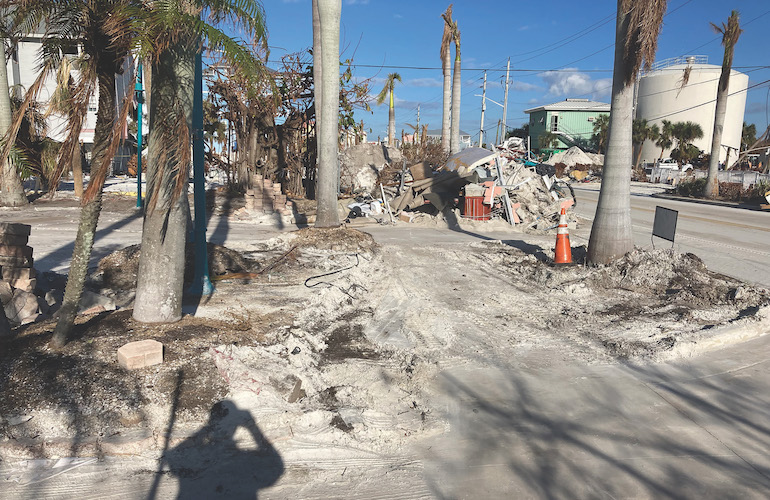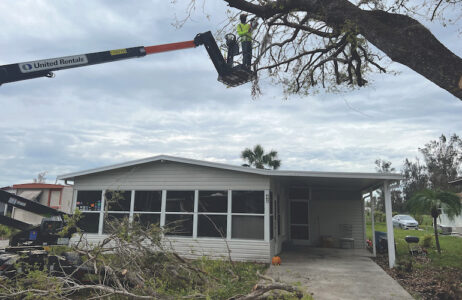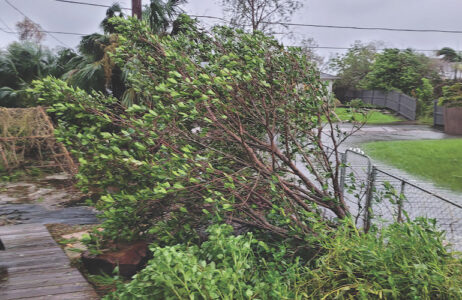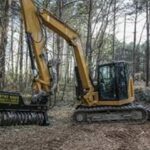Tree Services: Storm Prep & Cleanup
Source: www.TurfMagazine.com
Lessons from Southwest Florida landscapers in the aftermath of Hurricane Ian.
Storm cleanup is a common task for landscapers nationwide. For Florida landscapers, though, the frequency of hurricanes makes storm cleanup an even more prevalent part of their services. But when Hurricane Ian hit Southwest Florida in late September, the destruction and cleanup were on a level never experienced before.
Hurricane Ian was only over Southwest Florida for a day, but it left damage and debris that is still piled up in many communities. It was the second-deadliest storm to strike the continental U.S. this century, topped only by Hurricane Katrina in 2005.

Ian’s destruction was two-fold. First, sustained gale force winds of 150 MPH made landfall near Cayo Costa (an island off the coast of Fort Myers) according to the National Hurricane Center. Second, a staggering 26.42” of rain (recorded by the National Oceanic and Atmospheric Administration’s in Titusville, FL) coupled with catastrophic storm surge, reaching up to 18′ on the barrier islands of Captiva, Sanibel, Pine Island, and Fort Myers Beach. Bridges, buildings, cars, and boats were simply washed away. Across Florida, Ian left behind almost 31 million cubic yards of debris according to the Army Corps of Engineers. That’s five times more debris than Hurricane Sandy left in New York. According to a Washington Post article, it’s enough debris to fill the Empire State Building 22 times.
From a landscape perspective, Ian literally salted the earth, ripping trees out of the ground by the roots, stripping bushes of leaves, and raining salt water on everything for hours. After the storm, the region looked like it had been through several months of drought, with withered leaves and brown grass that just a day before were emerald green.
Pre-Storm Prep
The time period directly after Ian was chaotic with most of the region missing electricity, water, and gas, and roads covered in debris. So the most important storm preparation local landscapers did had nothing to do with servicing client properties, but everything to do with shopping months in advance.
“One of the most important things we do in preparation, months before hurricane season, it to buy all the supplies we will need in bulk,” says Brian Kennedy, owner of Fishtail Landscape and Lighting in Fort Myers and a 15-year veteran of the Industry. “During cleanup we can go through five chainsaw blades per machine, per day. And we know everybody in every county will be trying to get them after the storm, so we stock up months ahead of time in May or June. We pre-purchase containers of gasoline, as well, since finding it afterward is difficult. Even if a big storm doesn’t hit, we stockpile what we need since we can always use it throughout the year.”
The other important piece of preparation is having an “after the storm plan” in place with all employees, including a time and place to meet once the storm is over. Along with electricity going down, cellphone towers are also hit hard, so reliable communication can become difficult. Having a plan in place beforehand can ensure your employees know where to be and when, so cleanup work can start as quickly as possible. Elijah Rickelman, a 10-year veteran of the Industry and owner of Great Scapes in Fort Myers, FL, has his guys meet at his shop about six hours after the storm has passed. This gives them time to address whatever damage their own home may have sustained first. Having crews prepared to hit the ground immediately after the storm to start helping people remove debris, sometimes just to free them from their homes.
When it comes to hurricane preparation on client properties, unfortunately, there’s not a lot landscapers can do. While homeowners can “batten down the hatches” to bring in potential projectiles, protecting plants is more problematic. One of the most difficult things about a hurricane is that high winds will be sustained for several hours in one direction, in some cases flattening young trees to the ground. But after the eye of the storm passes, winds change and come from the opposite direction, flattening that same tree to the ground again, or possibly breaking it off. If there was significant rain, this change of wind can also completely uproot even the largest trees, like banyans. At the same time, after the eye also comes storm surge, with possible flooding of plants low enough to be thus far unaffected by the wind.


“It’s tough. I wish we could prepare our customer’s landscaping, but we can’t really do it unfortunately,” says Rickelman. “You know, there’s so much uncertainty and hurricanes are so unforgiving. On newer installs, ones that were installed a month or two before hurricane season, we can stake up trees to kind of prep a little bit. But you can stake a tree all you want and it could snap right above the stake and just leave the rest on the ground, you know? That’s the tough part.”
Cleanup Priorities
After the storm, it’s important to have crews prepared to hit the ground immediately after the storm to start helping remove debris—sometimes just to free people from their homes. “It is routine, after a storm, to prioritize clean up, and shelve other maintenance like mowing, weed control, fertilizing, planting, and mulching,” says Bob Cook, FCHP, a Certified Horticulture Pro-fessional, and member of the Florida Nursery Grower Landscape Association. “Beforehand, many land-caping companies have safety meetings, but their meeting focus changes from May through September, to include lightning safety and chainsaw operation for those who do not use them often.”
That’s because the main task being performed after a storm requires a lot of chainsaw work— cutting down the trees that have fallen on houses, cars, and in the roadways are the first priorities for all landscapers. Extra safety measures at this time revolve around being very aware of people in the area as well as power lines which may be hanging lower than usual or even lying on top of trees and shrubs.
“Our first priority is debris removal to be sure there is access for emergency vehicles or people to get in and out of their homes. [This means] getting fallen trees away from people’s houses and cars, driveways, and walkways, so they can get out of their driveway,” says Kennedy of Fishtail, pointing out that piles of debris were left everywhere by Ian. Storm surge in the coastal areas blocked entrances to houses and even to the entrances of communities. Kennedy continues, “Once all of our clients have been checked off that they do have that emergency access, then we come back and that’s when we go through the list of what goes into the main cleanup, which is typically stump grinding, pruning, and then if necessary, replanting. So it’s about a four month process.”
Landscapers who have both residential and commercial clients all said residential takes precedence after a storm. Making people’s properties safe is the most important work to be done, and commercial businesses usually aren’t open for several days afterward anyway. Another factor in scheduling priority besides the fallen trees and debris mentioned above, is water. “One thing we have to be careful about though is flooding. We cannot do work on someone’s yard if it hasn’t dried up yet,” says Rickelman. “Water is a big holdup sometimes, so if your yard is flooded, we have to wait to do the cleanup.”
When it comes to pricing, all mentioned being very careful about not price-gouging people who have just been through the worst storm of their lives. Each charged an hourly fee for their cleanup work.
Planning For The Future


Hurricane Ian was a storm of the century, but with weather events becoming more extreme, it may no longer be a once in a lifetime experience. So planning for storm resilience is on local landscapers’ minds.
“In terms of how our Industry may change due to Ian, I think they’re going to move everybody back from those coastal areas in my opinion. A lot of people are going lose backyards. Where they had 50’ of backyard going down to the water, they’re probably going to have some more seawall now, and less backyard, to try to protect from future land erosion,” comments Rickelman.
“And in terms of building codes, they’re going to raise everybody up, which is going to add a whole new factor to what we do as far as design,” he adds. “When you’re designing, your main three basics are depth, symmetry, and color. If a property is now 15′ off the ground and there’s just open area behind the house, you lose all that depth and symmetry. So now you’re left with just color [and] we have to figure out what we can do to make that color look good with what we have to work with.”
Bailey Peer, owner of Peer Landscaping (and profiled in Turf ’s October Yardstick feature), acknowledges that storm cleanup can present unique growth opportunties for landscape businesses. “Hurricane cleanup is actually how I jump started my landscaping business in 2017,” he says. “I was working with a handful of customers, part time, by myself. After Hurricane Irma, I hired 10 team members temporarily for storm cleanup work. This lasted about two months, then we scaled back to three full-time workers, including myself. We were able to sustain the three full timers by all the new contacts that we made through the storm clean up.”
 Three Winter Work Ideas For Mulchers & More
Three Winter Work Ideas For Mulchers & More
He adds, “The biggest storm lesson I learned is being available to the new talent that comes looking for a job after the storm. In Southwest Florida right now it’s extremely hard to find a team to build around. Talent is much harder to get than new clients. We have learned when things get shaken up in a storm, be open and available to hire the talent that might come knocking.”

Clapp has over 35 years experience in media and publishing and is a former Editor-In-Chief at Turf ’s sister publication, Business Facilities. With a Master of Media Arts from the New School, she is president of Visitivity Media in Ft. Myers, FL, specializing in video and digital marketing.
Do you have a comment? Share your thoughts in the Comments section below, or send an e-mail to the Editor at cmenapace@groupc.com.